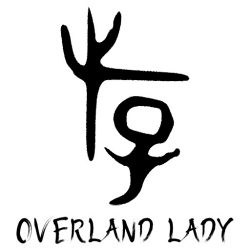I’ve been going through books at an ever-faster pace since I started using Audible. Podcasts and audiobooks fill up my time and made me enjoy being alone even more. All the small bits of time can be utilized for information intake. However, key points that pass through my ears while cleaning dishes do not have strong stickiness. I figured it would be more productive to collect notes of insights so I can turn the books into tools for my future development.

Recently I went through The Coaching Habit by Michael Bungay Stanier on Audible which left me with a series of insightful tips on human communication.
The Coaching Habit provides actionable advice on how to interact with others in ways that encourage them to think deeper. Essentially, the coaching questions act as guides which lead others to come up with ideas themselves.
Here is The Question Master Class from The Coaching Habit.
1. The Kickstart Question
“What’s on your mind?”
Passing small talks to leave an open end to invite the other person to tap straight into the topic. Then use the “4P Model” to find out the heart of the challenge: Project, People, or Patterns (behaviours and ways of working that you’d like to change).
If getting straight to the question is too odd, use the lead-in phrase “out of curiosity” as a buffer.
2. The AWE Question
“And What Else?”
With seemingly no effort, it creates more – more wisdom, more insights, more self-awareness, more possibilities – out of thin air. When using this question, more options are welcomed instead of being limited. Tame your advice monster not to provide your opinion right away. Guide the person to uncover and create new possibilities by him/herself.
Don’t go too far to get into the Paradox of Choice where too much options become trouble. Five is the maximum. If he/she doesn’t come up with the idea that you want to suggest, offer your idea, as an idea like “I’ve got an answer, which I want to suggest”, not as a question like “have you thought of..?”
3.The Focus Question
“What is the real challenge here for you?”
- -What’s the challenge? – too vague
- -What’s the real challenge here? -number of challenges to choose from, find the one that matters the most.
Focus on the REAL problem, not the FIRST problem. Find out the answer of this question to avoid:
- Solving the wrong problem
- Solving the problem yourself
- Not solving the problem
Bring the focus back to the person, if you find them only talk about other’s or a group of them instead of the “me”.
Adding the AWE question after the person’s answer in this section for better result.
Start the question with “what”, instead of “why”. For example, using “why did you do that?” will get you loads of useless excuses, instead, use “what were you hoping for here?” “what made you choose this action?”
First 3 questions can be combined as:
- What’s on your mind?
- Is there anything else on your mind?
- So what’s the real challenge here for you?
- And what else (is the real challenge here for you)?
- Is there anything else?
- So…. what’s the real challenge here for you?
4. The Foundation Question
“What do you want?”
The person may give you a bunch of make-up reasons, ask “but what do you really want?” Identify the difference between “want – I’d like to have this” and “need – I must have this”. Then analyse the deep lying needs from the person’s wants to grab understanding of the drive.
Manfred Max-Neef, Rosenberg’s 9 self-explanatory universal needs:
Affection. Creation. Recreation. Freedom. Identity. Understanding. Participation. Protection. Subsistence.
Asking “what do you want” increase TERA quotient so the person feels more safe and open to you:
- Tribe: Are you with me or against me;
- Expectation: Do I know the future or don’t I?
- Rank: Are you more important or less important than I am?
- Autonomy: Do I get a say or no?
Get comfortable with silence. If the question made the person pause for 2 second, don’t fill in the silence, simply wait another 3 seconds to allow space for the person’s brain to create new neural pathways.
5. The Lazy Question
“How can I help?”
Asking this question avoid to jump into any label of the Karpman Drama Triangle too quickly, especially the Rescuer – to offer solution/suggestion/help while may not be necessary to the other party, and thus won’t be valued.
Karpman Drama Triangle:
Victim: Poor me, It’s not my fault, it’s theirs. I have no sense of being able to change anything. I have no responsibility for fixing anything. Complain. Attract Rescuers.
Persecutor: I’m surrounded by people less good than me. It’s not my fault, it’s yours. Feel superior and have a sense of power and control but end up being responsible for everything. Don’t trust anything, feel alone.
Rescuer: Don’t worry, let me fix it. It’s my fault/responsibility, not yours. Feel morally superior and believe you are indispensable but people reject your help.
“How can I help” is a soft version of “what do you want from me?”. The Question makes the person to make a direct and clear request about why he/she brings up this topic. It also reduce your tendency of leaping into help mode (Rescuer).
6. The Strategic Question
“If you are saying Yes to this, what are you saying No to?
To minimize the misunderstanding of commitment, this question will make clear out the focus of the agreement and avoid the half-hearted Yes.
There is always an opportunity cost of every event you say Yes to. Stay slow before committing Yes: “If I can’t do all of this, but can do a part of it, what part would you have me do? What do you want me to take off my plate so I can do this?”
When you can’t commit to a Yes but don’t want to let the person down, say Yes to the person, and say No to the task.
The book Playing to Win suggests Five Strategic Questions:
- What is our winning aspiration?
- Where will we play?
- How will we win?
- What capabilities must be in place?
- What management systems are required?
7. The Learning Question
“What was most useful for you?”
Create a space for people to learn. This particular question outscores others such as “what’s important to capture? what’s the key insight?” due to the following reasons:
- it assumes the conversation was useful
- it asks people to identify the big thing that was most useful
- it makes it personal
- it gives you feedback
- it’s learning, not judging
- it reminds people how useful you are to them.
P.S.- If this post touches the copyright of the book in anyway, I will take down the post with my deep apology.
